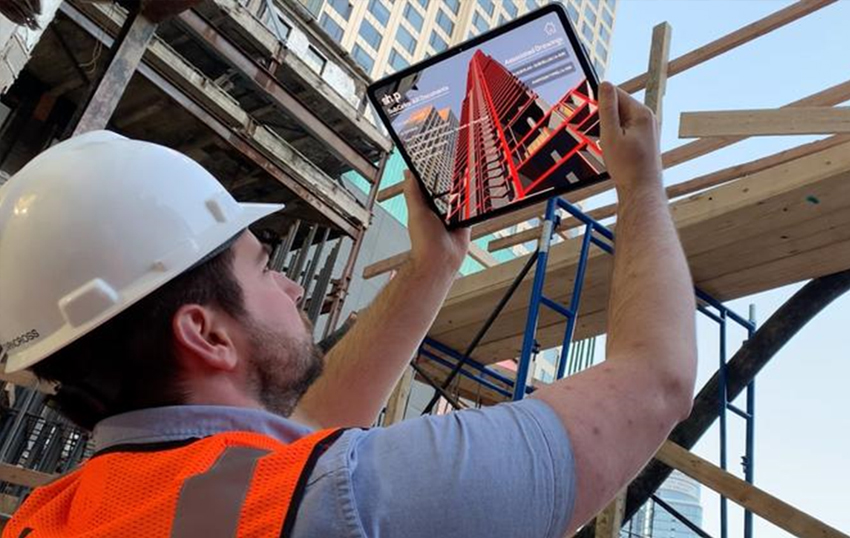Giving construction workers access to technology such as augmented reality (AR) will not only combat soaring resource costs, but help attract young people to construction roles, says GlobalData.

While AR could give the industry a much-needed reinvigoration, a large number of executives are not planning to invest.
According to GlobalData’s report, ‘Augmented Reality (AR) in Construction’, around 55% of construction industry executives surveyed by GlobalData in late 2021 intend to invest in AR within the next two years.
However, the same survey reveals a third have no plans to buy into the technology.
Robert Penman, Analyst for the Thematic Research team at GlobalData, says getting people in the right place at the right time is a constant problem in construction, and technology adoption will help attract the talent needed to invigorate the industry.
“Those that are not looking to invest will miss out on the many benefits that AR can bring, including increasing project accuracy, supporting collaborative design, and enabling stakeholder engagement. If these are to be achieved, money must be put in the hands of contractors, so they can determine the technology necessary to improve efficiency.”
Contractors constantly face challenges in securing people, materials, and equipment. Not only did Covid-19 lead to staff shortages due to illness, travel restrictions, and supply issues, but delays and other bureaucratic procurement processes inevitably drove up project costs.
“The construction industry is suffering from supply chain issues and soaring resource costs,” Penman says.
“Firms have seen project expenses increase steadily in the past few years, and this is unlikely to change. The Ukraine conflict will further strain supply chains, as rising oil prices will add to transportation costs and higher crude prices will impact oil derivatives, including bitumen.”
How can AR help combat these challenges?
The global AR market is exploding. GlobalData expects the sector to grow from a mere $9 billion in 2021, to a whopping $152 billion by 2030. Not only does this show its popularity as a product, but also its resourcefulness.
Looking at the construction industry specifically, GlobalData’s report has identified several emerging AR use cases with huge potential.
“AR will be particularly useful during a project’s construction stage due to the sheer number of operatives that could use these devices,” Penman says.
“AR enables building models to be positioned on site through headsets or smart glasses, so they can be compared to the construction site. A user will easily notice errors before further work occurs, avoiding unnecessary rework and using additional expensive materials.
“The more complex mechanical, electrical, and plumbing (MEP) elements a project requires, the more the project will gain from AR.”
However, the construction industry has been suffering from thin profit margins that have undoubtedly made investing in technology difficult recently.
Danny Richards, Construction Analyst at GlobalData, says prices for key construction materials have been under significant upward pressure, with the recovery of construction activity in 2021 increasing demand for materials.
“This is especially pressing, given that Covid-19 disruption triggered supply shortages.
“The fallout from the Ukraine war has exacerbated these inflationary pressures, severely impacting contractors working on fixed-price contracts.
“With supply disruptions likely to prevail in the coming quarters, and the ongoing challenges that contractors will face, investment in technology in the short-term could be limited.”







